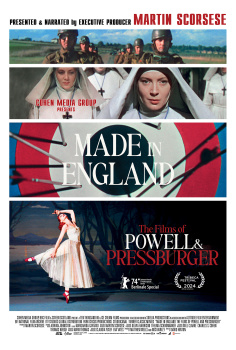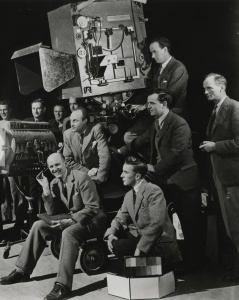By George Leon
Another of my favorite products has passed away to the annals of photographic history this month. Polaroid, the instant camera outfit with the ubiquitous instant self-developing film packaged in a blue box or a rainbow wrapped box, lost the battle against the gratifying immediacy of digital photography. The company which stopped making instant cameras for consumers a year ago and for commercial use a year before that, said that as soon as it had enough instant film manufactured to last it through 2009, it would stop making that, too. Three plants that make large-format instant film will close by the end of the quarter, and two that make consumer film packets will be shut by the end of the year.
Polaroid® (a trademark of the Polaroid Corporation) is the name of a type of synthetic plastic sheet which is used to polarize light. The original material, patented in 1929 and further developed in 1932 by
Edwin H. Land, consists of many microscopic crystals of
iodoquinine -
sulphate herapathite embedded in a transparent nitrocellulose polymer film. The needle-like crystals are aligned during manufacture of the film by stretching or by applying electric or magnetic fields. With the crystals aligned, the sheet tends to absorb light, which is polarized parallel to the direction of the crystal alignment, but transmits light, which is polarized perpendicularly to it. This allows the material to be used as a light polarizer. Its crystalline structure also blocks the transmission of non-perpendicular light. Not only did Polaroid’s techniques work in film, but they also work in sunglasses, window coatings, liquid crystal displays and microscopes.

Limited edition of 4x5 Alpenhause Polaroid with a 127mm,f/4.7, 4-element Rodenstock Ysarex and double-windowviewfinder/rangefinder on top of the camera andautomatic parallax compensation  Polaroid Land 180 with a 114mm, f/3.8 4-elementTominon lens. Separate-window range/viewfinderassembly. Built-in mechanical development timer
Polaroid Land 180 with a 114mm, f/3.8 4-elementTominon lens. Separate-window range/viewfinderassembly. Built-in mechanical development timerAmong other photographic products of my choice that had come to a rather inglorious end is the
Agfa-Gevaert XT series of motion picture camera negative stock, an emulsion that rendered beautiful subtle pastels and warm earthy tones and a first choice of many cinematographers around the world. I was fortunate enough to shoot many cans of
Afga XTR250 and
XTS400 and also compare its characteristics against
Kodak and
Fujifilm stocks in different workshops and presentations held in a short-lived cine club for professional cinematographers underwritten by
Carol Dean of now defunct
Studio Film and Tape and members of the old
IATSE local 644 in New York City. Until not long ago, I had in my possession 1,200 feet (6 cans) of AgfaXT320 in my fridge.
But the saddest of all losses, is the retirement of the
35mm Eastman Kodak Kodachrome transparency film, with its durable polyester base and the sharpest dye couplers emulsion of the any era.
Kodachrome was processed exclusively using its proprietary
K-14, a predecessor of the common slide E-6 process, yielding a unique look, deep contrast and rich vibrant lasting colors. I was also lucky to shoot hundred of rolls of
Kodachrome 25 ASA,
64ASA or
200ASA film, my favorite emulsion for corporate portraiture and fashion shoots. It was always a hit, if printed in
Cibachrome. Fantastic looking prints! For more information about cibachrome prints, visit the website of a master printer and friend of mine at
http://www.cloneachrome.com/  Kodachrome 64
Kodachrome 64In 1947, with World War II over and government contracts drying up, Edwin H. Land rushed his instant camera into production, with spectacular success. Consumers bought millions of Polaroid cameras and hundreds of millions of Polaroid film packs, establishing the company as one of Massachusetts' biggest manufacturers, with as many as 15,000 employees, and revenue that peaked at $2.31 billion in 1994.
According to the Photo Marketing Association, Americans bought 4.2 million instant cameras in 2000, nearly all of them Polaroid. However, they bought 4.5 million digital cameras that same year. It was a harbinger of hard times for Polaroid; digital cameras steadily got cheaper and better, and users became accustomed to sharing snapshots over the Internet. Last year, Americans bought 28.2 million digital cameras, and just 240,000 instant cameras.
But also, Polaroid had other problems: Its successful fight against a hostile takeover bid in the late 1980s left the company swamped with debt. It filed for bankruptcy protection in 2001, and is now owned by privately-held Petters Group Worldwide, of Minnetonka, Minn. “We’re trying to reinvent Polaroid so it lives on for the next thirty to forty years,” said Tom Beaudin, Polaroid’s President, COO and CFO in an interview to the Boston Globe. Petters changed its direction from instant cameras and instant film to digital cameras, flat-panel TV sets, DVD players and computer monitors under the Polaroid brand.
Polaroid’s decision to halt film production of their cameras and instant film distressed photo professionals and photo amateurs around the globe. Polaroid pack or sheet film is a very important tool for the non-digital professional, commercial and art photographer, allowing us to evaluate lighting, exposure and composition prior shooting our chosen emulsion in 35mm 120, 4x5, 5x7 or 8x10 formats. Every medium and large format camera maker offered a Polaroid back or facilitated the way for other aftermarket companies to adjust a Polaroid back in their cameras.
Prior every still shooting I did, regardless of the format, (except 35mm) and client, from corporate, to fashion to tabletop (2 1/4x 2 1/4 Hasselblad, 6x7 Mamiya or 4x5 Linhof/ Sinar) at my New York City/Hoboken studio or anywhere on location, I always used Polaroid pack or sheet film to evaluate lighting, exposure and composition. It was beautiful. It created a sense of anticipation, crew-client collaboration and sometimes worked as currency to pay agency “go-see” models, makeup artists or lunch. It was the proof of proofs of a successful shoot.
 Polaroid 669 film is balanced for averagedaylight (5500K) at 1/125 of a second,as well as for electronic flash units
Polaroid 669 film is balanced for averagedaylight (5500K) at 1/125 of a second,as well as for electronic flash units Polaroid 57 4 x 5 Black and White Sheetfilm is a high speed, panchromatic generalpurpose black and white print film.Ultra high-speed Medium contrast,medium grain
Polaroid 57 4 x 5 Black and White Sheetfilm is a high speed, panchromatic generalpurpose black and white print film.Ultra high-speed Medium contrast,medium grainThe ritual to time the processing of a Polaroid sheet or pack film coming out the rollers of a Polaroid back was sometimes a comical or a dramatic event among professional photographers. Usually, only assistants that had gained enough trust from the photographer could peel apart the Polaroid film. Timing and correct peeling apart of the film was key to offer a perfect proof to the client. The pungent smell of the gooey chemical left in my fingers after every peeling apart is a smell I will never forget.
 A Polaroid 4x5 sheet holder, standardfor every 4x5 view camera
A Polaroid 4x5 sheet holder, standardfor every 4x5 view camera A Polaroid holder for pack film 6x 7 RZ Mamiya
A Polaroid holder for pack film 6x 7 RZ MamiyaThe beauty of the subtle image etched into the negative of the
Polaroid film is an object of admiration and manipulation by creative photographers and artists. A favored Polaroid camera by many artists, law enforcement, insurance companies and Polaroid aficionados was the high-end
SX-70 because it’s many features as a reflex camera using integral print film.
 Polaroid SX-70 the first foldable "reflex" instant
Polaroid SX-70 the first foldable "reflex" instantcamera with integral film and coated 4-element116mm f/8 coated glass lens and electronic shutter.The SX-70 film was the favorite of artists forcreative manipulation (read more) Time is changing everything rapidly; a new camera or new photographic technology could become obsolete faster than ever. Film and analog video is being replaced by HD video. High-speed film cinematography is being replaced by super high-speed video. 2D imagery acquisition is being fiercely courted by 3D acquisition, postproduction and distribution.
(see Avatar, James Cameron's new movie)An example in how fast a new technology becomes obsolete faster than ever, dwells in two little wonder cameras of early 2000, the Cannon XL and the Panasonic DVX100A/B, now dwarfed to say the least, by their HDV updated versions. It is technology-eating technology. The gratifying immediacy of a beautiful and grain less high-definition image is the incentive, is the Holy Grail, is the raison d’être.
As many other people, I will miss the different cheap Polaroid cameras I have owned through the years, spitting integral film with a toying sound and seeing the ethereal images forming in front of my eyes. Also, will miss a retrofitted 185 Land with a Copal leaf shutter I sold not too long ago and the screw-ups that happened every time I pulled wrongly the protective tab of a 669 or a 667-pack film. But overall, what I will miss the most is the wonderment offered by a technology that lasted over eighty years. A longevity record now days, that’s for sure.
 Polaroid Land 180 with a 114mm, f/3.8 4-element
Polaroid Land 180 with a 114mm, f/3.8 4-element Polaroid 669 film is balanced for average
Polaroid 669 film is balanced for average Polaroid 57 4 x 5 Black and White Sheet
Polaroid 57 4 x 5 Black and White Sheet






























































